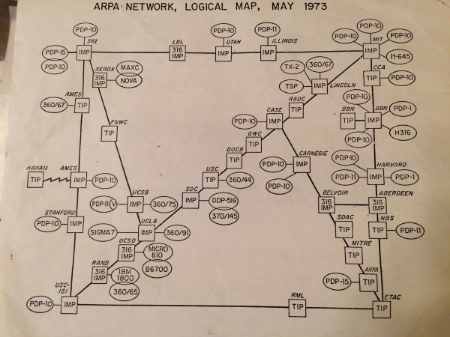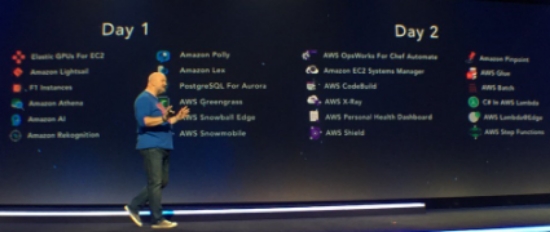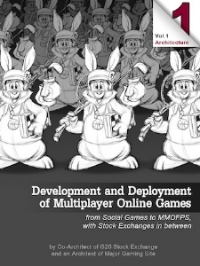Author Archives: Todd Hoff
Author Archives: Todd Hoff

Have you ever read a book and wondered how any human could have written something so brilliant? For me it was Lord of the Rings. I despaired that in a hundred lifetimes I could never write a book so rich, so deep, so beautiful. Since then I've learned a few things about about how LoTr was created that has made me reconsider. The kick-in-the-head is that it's the same lesson I learned long ago about writing software.
I've always been amazed how a program can start as a single source file and after years of continued effort turn into a working system that is so large no human can come close to understanding it. If you had tried from the start to build the system you ended up with you would have never ever got there. That's just not how it works. Software is path dependent.
I've experienced this growth from a single cell to a Cambrian explosion many times so I know it's a thing. What I hadn't considered is how it's also a thing for writing books too.
Creating good software is a process of evolution through the mechanism of constant iteration for the purpose of survival. Continue reading

Hey, it's HighScalability time:



Steve Jobs is notorious for hating buttons. Here's Jobs explaining the foulness of buttons during his famous iPhone introduction:
What's wrong with their [other phones] user interface? The problem with them is really sort of in the bottom 40. They all have these keyboard that are there whether you need them or not to be there. And they all have these control buttons that are fixed in plastic and are the same for every application. Well every application wants a slightly different user interface, a slightly optimized set of buttons just for it. And what happens if you think of a great idea six months from now? You can't run around and add a button to these things. They're already shipped. So what do you do? It doesn't work because the buttons and the controls can't change.
The iPhone solved the button problem with a new multi-touch screen and by using your finger as the pointing device (not a nasty nasty stylus). We all know how this works now, but it was novel back in the olden days.
The iPhone was one of three new products based on revolutionary user interface development: the mouse and the Macintosh; the click-wheel Continue reading
Hey, it's HighScalability time:

This question came in over the Internets. If you have any ideas please consider sharing them if you have the time...
I am building a 2 way subscription model I am working on a blockchain project where in I have to built a information/data portal where in I will have 2 types of users data providers and data recievers such that there should be anonimity between both of these.
Please guide me how can I leverage blockchain (I think Etherium would be useful in this context but not sure) so that data providers of my system can send messages to data receivers anonymously and vice versa data receivers can request for data through my system to data providers.
I believe, it work if we can create a system where in if a user has data, it will send description to the server, The system will host this description about data without giving the data provider details.
Simultaneously server will store info which user has the data. When data receiver user logs in to system and wants and sees the description of data and wants to analyze that data, it will send request to server for that data. This request is Continue reading

This is a guest post by Mihai Rotaru, CTO of MigratoryData.
Using the RESTful HTTP request-response approach can become very inefficient for websites requiring real-time communication. We propose a new approach and exemplify it with a well-known feature that requires real-time communication, and which is included by most websites: search box autocomplete.
Google, which is one of the most demanding web search environments, seems to handle about 40,000 searches per second according to an estimation made by Internet Live Stats. Supposing that for each search, a number of 6 autocomplete requests are made, we show that MigratoryData can handle this load using a single 1U server.
More precisely, we show that a single MigratoryData server running on a 1U machine can handle 240,000 autocomplete requests per second from 1 million concurrent users with a mean round-trip latency of 11.82 milliseconds.
Hey, it's HighScalability time:


How we treat each other is based on empathy. Empathy is based on shared experience. What happens when we have nothing in common?
Systems are now being constructed so we’ll never see certain kinds of information. Each of us live in our own algorithmically created Skinner Box /silo/walled garden, fed only information AIs think will be simultaneously most rewarding to you and their creators (Facebook, Google, etc).
We are always being manipulated, granted, but how we are being manipulated has taken a sharp technology driven change and we should be aware of it. This is different. Scary different. And the technology behind it all is absolutely fascinating.
Hey, it's HighScalability time:


This is a guest repost Barzan Mozafari, an assistant professor at University of Michigan and an advisor to a new startup, snappydata.io, that recently launched an open source OLTP + OLAP Database built on Spark.
Almost everyone these days is complaining about performance in one way or another. It’s not uncommon for database administrators and programmers to constantly find themselves in a situation where their servers are maxed out, or their queries are taking forever. This frustration is way too common for all of us. The solutions are varied. The most typical one is squinting at the query and blaming the programmer for not being smarter with their query. Maybe they could have used the right index or materialized view or just re-write their query in a better way. Other times, you might have to spin up a few more nodes if your company is using a cloud service. In other cases, when your servers are overloaded with too many slow queries, you might set different priorities for different queries so that at least the more urgent one (e.g., CEO queries) finish faster. When the DB does not support priority queues, your admin might even cancel your Continue reading
Hey, it's HighScalability time:


Sergey Ignatchenko continues his excellent book series with a new chapter on databases. This is a guest repost.
The idea of single-write-connection is used extensively in the post, as it's defined elsewhere I asked Sergey for a definition so the article would make a little more sense...
As for single-write-connection - I mean that there is just one app (named "DB Server" in the article) having a single DB connection to the database which is allowed to issue modifying statements (UPDATEs/INSERTs/DELETEs). This allows to achieve several important simplifications - first of all, all fundamentally non-testable concurrency issues (such as missing SELECT FOR UPDATE and deadlocks) are eliminated entirely, second - the whole thing becomes deterministic (which is a significant help to figure out bugs - even simple text logging has been seen to make the system quite debuggable, including post-mortem), and last but not least - this monopoly on updates can be used in quite creative ways to improve performance (in particular, to keep always-coherent app-level cache which can be like 100x-1000x more efficient than going to DB).
After we finished with all the preliminaries, we can now get to the interesting part – implementing our transactional DB and Continue reading

Hey, it's HighScalability time:


This is a guest post by Urban Airship. Contributors: Adam Lowry, Sean Moran, Mike Herrick, Lisa Orr, Todd Johnson, Christine Ciandrini, Ashish Warty, Nick Adlard, Mele Sax-Barnett, Niall Kelly, Graham Forest, and Gavin McQuillan
Urban Airship is trusted by thousands of businesses looking to grow with mobile. Urban Airship is a seven year old SaaS company and has a freemium business model so you can try it for free. For more information, visit www.urbanairship.com. Urban Airship now averages more than one billion push notifications delivered daily. This post highlights Urban Airship notification usage for the 2016 U.S. election, exploring the architecture of the system--the Core Delivery Pipeline--that delivers billions of real-time notifications for news publishers.
In the 24 hours surrounding Election Day, Urban Airship delivered 2.5 billion notifications—its highest daily volume ever. This is equivalent to 8 notification per person in the United States or 1 notification for every active smartphone in the world. While Urban Airship powers more than 45,000 apps across every industry vertical, analysis of the election usage data shows that more than 400 media apps were responsible for 60% of this record volume, sending 1.5 billion notifications Continue reading
Hey, it's HighScalability time:
